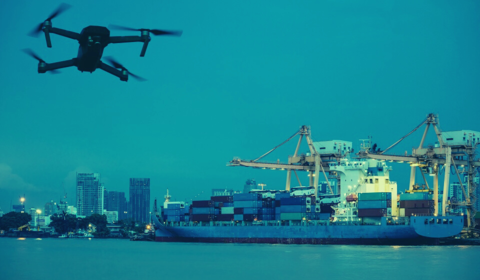
Technology and necessity are pushing marine and offshore toward more remote possibilities
The quest to find safe, efficient and cost-effective inspection techniques for marine and offshore assets has been underway for years. While remote surveys have been gradually gaining acceptance, the COVID-19 pandemic is highlighting the pressing need for wider adoption of these innovative techniques.
Traditionally, marine and offshore inspections required surveyors and auditors to be physically present onboard an asset. However, several factors are driving the push for remote inspections to enhance safety, as well as reduce cost and inspection time.
The COVID-19 pandemic has pushed the discussion even further around innovative solutions to enable high-quality inspections at a distance. It has offered third-party service providers a chance to review their processes. Meanwhile regulatory bodies have investigated potential changes to their rules and requirements.
Enhanced safety is a major benefit of remote asset inspections. By using drones and virtual technologies, surveyors can get a window into an asset’s systems. Without needing to physically enter confined spaces or harsh environments, surveyors can carry out their inspection processes for in complete safety.
The imagery, live video and other data produced by these remote technologies offer great visibility of vessel components. From one inspection to the next, surveyors become familiar with particular areas that are malfunctioning, and are able to check on those components via live stream without the need to be onboard as much as previously.
At the same time, remote techniques enable significant cost reduction. Surveyors cut down on travel expenses, and part of the inspection can be done with reduced need for scaffolding.
DP vessel inspections in the COVID-19 era
When it comes to dynamically positioned (DP) vessels, the drive toward remote inspections has been going on for many years. Concern over whether they provide the same robust quality as onboard surveys has slowed adoption rates, but the COVID-19 era has placed a spotlight on remote inspections once again.
In recent years, various methods of conducting annual DP trials and DP class renewal surveys have evolved. Remote methodologies have been adopted where applicable, and where they remain in compliance with industry standards and class regulations. These methodologies are ever evolving and will become more prevalent.
In this way, some elements of DP surveys are being done remotely, helping lower overall costs and time required. Other recent examples of successful remote survey and testing have included vessel mission equipment systems such as personnel transfer systems for the wind farm industry. Here, surveyors witnessed the conducting of site acceptance tests remotely while following a strict program with clear acceptance and validation requirements. Over time, these methodologies will improve and become more efficient.
In some ways, COVID-19 has improved relationships between crew and inspectors, as they work together to perform inspections. Due to imposed limitations, third-party providers aren’t simply prescribing a test and delivering results, as had been done before. Now, they involve crew in the whole process by getting them to show the exact components that need to be inspected. This is building natural rapports that just didn’t exist before.
Built-in technology paves future pathways
The technologies being used today to witness surveys via live stream are a stepping-stone to more enhanced data acquisition and condition-based monitoring systems. It’s only a matter of time before fully unmanned vessels come on the market, equipped with remote inspection technologies. These newbuilds will be more advanced in terms of autonomy and sensors.
New and innovative onboard systems are being designed to test themselves in the coming years. This will reshape the role of a surveyor or auditor. Third-party providers will interpret data from those built-in systems and use their expertise to provide a full system assessment and validation.
However, this is still a few years away. Retrofitting existing assets with built-in inspection technologies is potentially too costly. Therefore, while these new, technologically advanced vessels are being built, the industry will require conventional survey methods for several years to come.
The role of third-party providers in remote inspections
We remain at the forefront of remote survey technology with a range of offers:
- SiteCall: For occasional surveys that require live streaming, our SiteCall solution offers videoconference capabilities and connectivity. The surveyor and crew can connect live, discuss inspection requirements, and capture data (photos, video and documentation) as needed.
- DP digital tool: Our proprietary digital tool in development for DP annual trials offers maximum efficiency and cost effectiveness. By helping surveyors digitize their reporting process, it reduces both cost and time required to conduct the trial.
- Global offer: Thanks to our remote survey centers all over the world, we can support clients wherever they are. We are helping marine and offshore asset owners and operators test new technologies using a fully dedicated process, first by verifying whether the technology meets their needs, and then carrying out a proof of concept.
Remote surveys and techniques offer major benefits to owners and operators looking to optimize their operations. BV Solutions M&O remains a leader in this area for the benefit of all clients seeking more practical, efficient and safe ways to inspect marine and offshore assets.